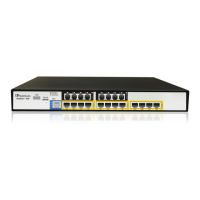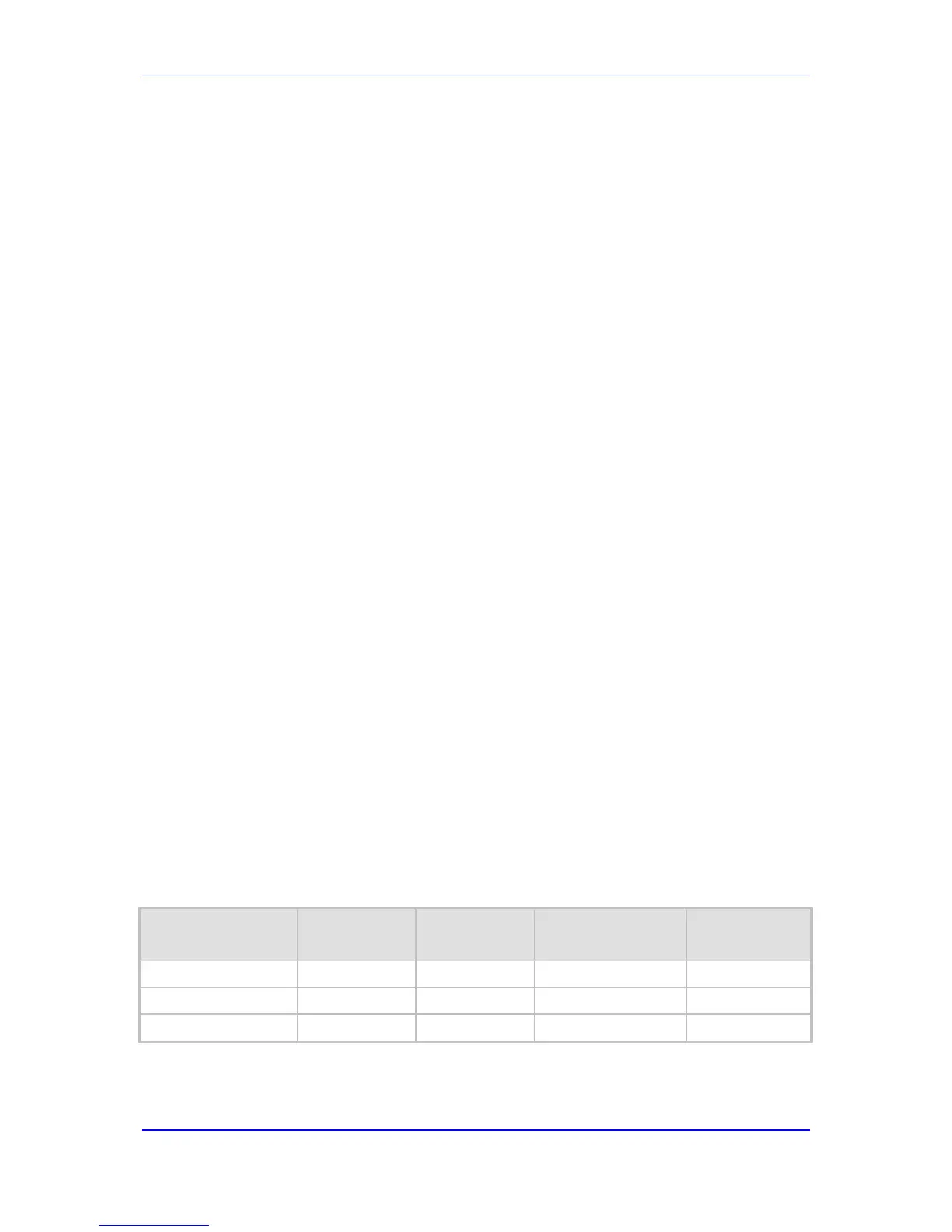Version 6.6 341 Mediant 800 MSBR
User's Manual 26. Routing
You can view the connectivity status of IP destinations in the following Web interface
pages:
Outbound IP Routing Table: The connectivity status of the IP destination per routing
rule is displayed in the 'Status' column. For more information, see 'Configuring
Outbound IP Routing Table' on page
327.
IP Connectivity: This page displays a more informative connectivity status of the IP
destinations used in Tel-to-IP routing rules in the Outbound IP Routing table. For
viewing this page, see 'Viewing IP Connectivity' on page
691.
26.5 Alternative Routing for Tel-to-IP Calls
The device supports various alternative Tel-to-IP call routing methods, as described in this
section.
26.5.1 Alternative Routing Based on IP Connectivity
You can configure the device to do alternative Tel-to-IP call routing based on IP
connectivity. When the connectivity state of an IP destination is unavailable, the device
attempts to re-route the Tel-to-IP call to an alternative IP destination. It does this by
searching for the next call matching rule (e.g., phone number prefix) in the Outbound IP
Routing table.
The device searches for an alternative IP destination when any of the following connectivity
states are detected with the IP destination of the initial Tel-to-IP routing rule:
No response received from SIP OPTIONS messages. This depends on the chosen
method for checking IP connectivity.
Poor QoS according to the configured thresholds for packet loss and delay.
Unresolved DNS, if the configured IP destination is a domain name (or FQDN). If the
domain name is resolved into two IP addresses, the timeout for INVITE re-
transmissions can be configured using the HotSwapRtx parameter. For example, if
you set this parameter to 3, the device attempts up to three times to route the call to
the first IP address and if unsuccessful, it attempts up to three times to re-route it to
the second resolved IP address.
The connectivity status of the IP destination is displayed in the 'Status' column of the
Outbound IP Routing table per routing rule. If it displays a status other than "ok", then the
device considers the IP destination as unavailable and attempts to re-route the call to an
alternative destination. For more information on the IP connectivity methods and on
viewing IP connectivity status, see 'IP Destinations Connectivity Feature' on page 340.
The table below shows an example of alternative routing where the device uses an
available alternative routing rule in the Outbound IP Routing table to re-route the initial Tel-
to-IP call.
Alternative Routing based on IP Connectivity Example
Destination
Phone Prefix
IP Destination
IP Connectivity
Status
Rule Used?
Main Route
40 10.33.45.68 "No Connectivity" No
Alternative Route #1
40 10.33.45.70 "QoS Low" No
Alternative Route #2
40 10.33.45.72 "ok" Yes

